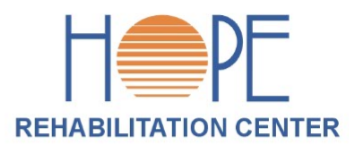 Information is power and the Hope Rehabilitation Center wants to give each person the information they need to understand their prosthetic options. The design, quality, functions and price of the prosthesis depends on the level of amputation, the age, profession and social environment of the amputee.
Information is power and the Hope Rehabilitation Center wants to give each person the information they need to understand their prosthetic options. The design, quality, functions and price of the prosthesis depends on the level of amputation, the age, profession and social environment of the amputee.
Know Your Options
One option is choosing not to wear a prosthesis. For some people, this is the best choice and the one with which they are most comfortable. There may be limited functional advantage to using a prosthesis and they may prefer to adapt to their limb deficiency. Other reasons may be a negative experience with their first prosthesis or the prospect of revision surgery, which is sometimes necessary for a successful prosthetic fit.
Following are different Upper Extremity Prosthetics available at Hope Center
- Custom Color Cosmetic Gloves
- Passive & Functional Systems
- Partial Hand and Wrist
- Transradial (Below Elbow)
- Transhumeral (Above Elbow)
- Shoulder Disarticulation/Scapulo-Thoracic
- Silicone Restorations
- Conventional Systems
- Hybrid Systems
- Externally Powered Systems
- Externally Powered Myoelectric Systems
Passive Prosthesis
The passive prosthesis, which is a cosmetic restoration, is another option for upper extremity patients. It is an excellent choice for users who do not require precise hand control or grasp but still seek a cosmetically pleasing prosthesis.
Conventional or Body-Powered Prosthesis
The conventional or body-powered prosthesis is a choice many upper extremity users make. This prosthesis is suspended from a harness fastened around the person’s shoulder or upper torso. It is controlled by upper body movements that utilize a cable connected to the harness at one end, and to a mechanical hand, hook or elbow at the other end. Many people feel this type of prosthesis grants them a wide range of basic function and control.
Electrically Powered Prosthesis
Another option is the electrically powered prosthesis that utilizes motors to open and close the hand, and can also flex and extend the elbow or rotate the wrist. This option offers many control choices.
Myoelectric Prosthesis
One of the most popular is myoelectric control. The user controls the prosthesis by contracting the muscles in the residual limb, generating EMG signals that activate the motor in the elbow, wrist or hand. Some people find that the myoelectric prosthesis allows a greater range of motion, a more natural appearance, and enhanced workability. It is also more comfortable since the harness is either smaller or is eliminated completely.
Hybrid Prosthesis
Combining elements of the conventional and the electrically powered prosthesis create another option – the hybrid. A hybrid prosthesis provides the user with the unique ability to operate the elbow and the hand at the same time. This feature can dramatically increase the rehabilitation potential of some individuals.
Finally, the adaptive or activity-specific prosthesis is meant for the individual whose specialized requirements cannot be met by the other options. Various terminal devices can be utilized depending on the specialized activity. For example, custom adaptations can be fabricated for photography, swimming, basketball, baseball, golf, fishing, pool and most other recreational activities.

